1. Overview
Hiroyoshi Nishizawa was a highly distinguished Japanese naval aviator and an ace pilot of the Imperial Japanese Navy Air Service during World War II. Born on January 27, 1920, in Nagano Prefecture, Japan, Nishizawa's exceptional combat skills and unpredictable aerobatics earned him the formidable nickname "Devil of Rabaul." He was a key member of the Tainan Kōkūtai's renowned "clean up trio" alongside fellow aces Saburō Sakai and Toshio Ōta, engaging in intense aerial battles during the New Guinea campaign, the Solomon Islands campaign, and the Guadalcanal campaign. While his official aerial victory count stands at 87, various sources claim figures ranging from 102 to over 150, reflecting the challenges in verifying combat claims during wartime. Nishizawa's career highlights the intense and often devastating nature of aerial warfare, where individual prowess was pitted against overwhelming technological and numerical superiority, ultimately contributing to the immense human cost of the conflict. He was tragically killed on October 26, 1944, while traveling as a passenger on a transport aircraft during the Philippines Campaign.
2. Early Life and Training
Hiroyoshi Nishizawa's journey into military aviation began from humble origins, leading him through rigorous training to become one of the Imperial Japanese Navy's most formidable pilots.
2.1. Birth and Early Life
Hiroyoshi Nishizawa was born on January 27, 1920, in a mountain village within the Nagano Prefecture, specifically Minamiogawa Village in Kamiminochi District. He was the fifth son of Mikiji and Miyoshi Nishizawa, and the third son among four sons and one daughter. His father was a retired military officer and managed a local sake brewery, while the family also engaged in agriculture and sericulture. After graduating from Minamiogawa Elementary School's higher course in March 1934, Nishizawa, at his father's suggestion, began working in a civilian silk reeling factory in Okaya in April of the same year.
2.3. Early Service and Assignments
Before the outbreak of World War II, Nishizawa served with the Oita, Omura, and Suzuka 航空隊KōkūtaiJapanese (air groups/wings). On October 1, 1941, he was transferred to the Chitose Air Group with the rank of Petty Officer 1st Class, where he underwent training in preparation for the anticipated war with the United States. His unit subsequently moved through Saipan and Ruot, eventually advancing to Rabaul from Truk Islands in February 1942. On the night of February 3, amidst poor visibility due to a new moon, Nishizawa, flying an obsolete Type 96 Carrier Fighter, reported his first aerial kill of the war, a twin-engine flying boat. However, Australian Air Force records indicate that this PBY Catalina aircraft was only damaged and managed to return to its base. On February 10, Nishizawa's squadron was transferred to the newly formed 4th Air Group. As new Mitsubishi Zeros (A6M2, Model 21) became available, Nishizawa was assigned an A6M2 bearing the tail code F-108. During this period, he reported seven solo kills and five joint kills.
3. World War II Service
Hiroyoshi Nishizawa's World War II service was marked by intense aerial combat across the Pacific, where he distinguished himself as a formidable fighter pilot.
3.1. Deployment to Rabaul and New Guinea Campaign
Following the outbreak of the Pacific War, Nishizawa's squadron, flying the obsolete Mitsubishi A5M, moved from the Chitose Air Group to Vunakanau airfield on the newly captured island of New Britain. They received their first Mitsubishi Zeros (A6M2, Model 21) that same week. On April 1, 1942, Nishizawa's squadron was transferred to Lae, New Guinea, and assigned to the Tainan Air Group. There, he flew alongside fellow aces Saburō Sakai and Toshio Ōta in a 中隊chūtaiJapanese (squadron) led by Junichi Sasai. Sakai described Nishizawa as being about 68 in (173 cm) tall and weighing 139 lb (63 kg), with a pale and gaunt appearance, constantly suffering from malaria and tropical skin diseases. Despite his physical condition, he was accomplished in judo. His squadron mates, who affectionately nicknamed him "the Devil," regarded him as a reserved, taciturn loner. Of his aerial performance, Sakai, himself one of Japan's leading aces, famously wrote, "Never have I seen a man with a fighter plane do what Nishizawa would do with his Zero. His aerobatics were all at once breathtaking, brilliant, totally unpredictable, impossible, and heart-stirring to witness."
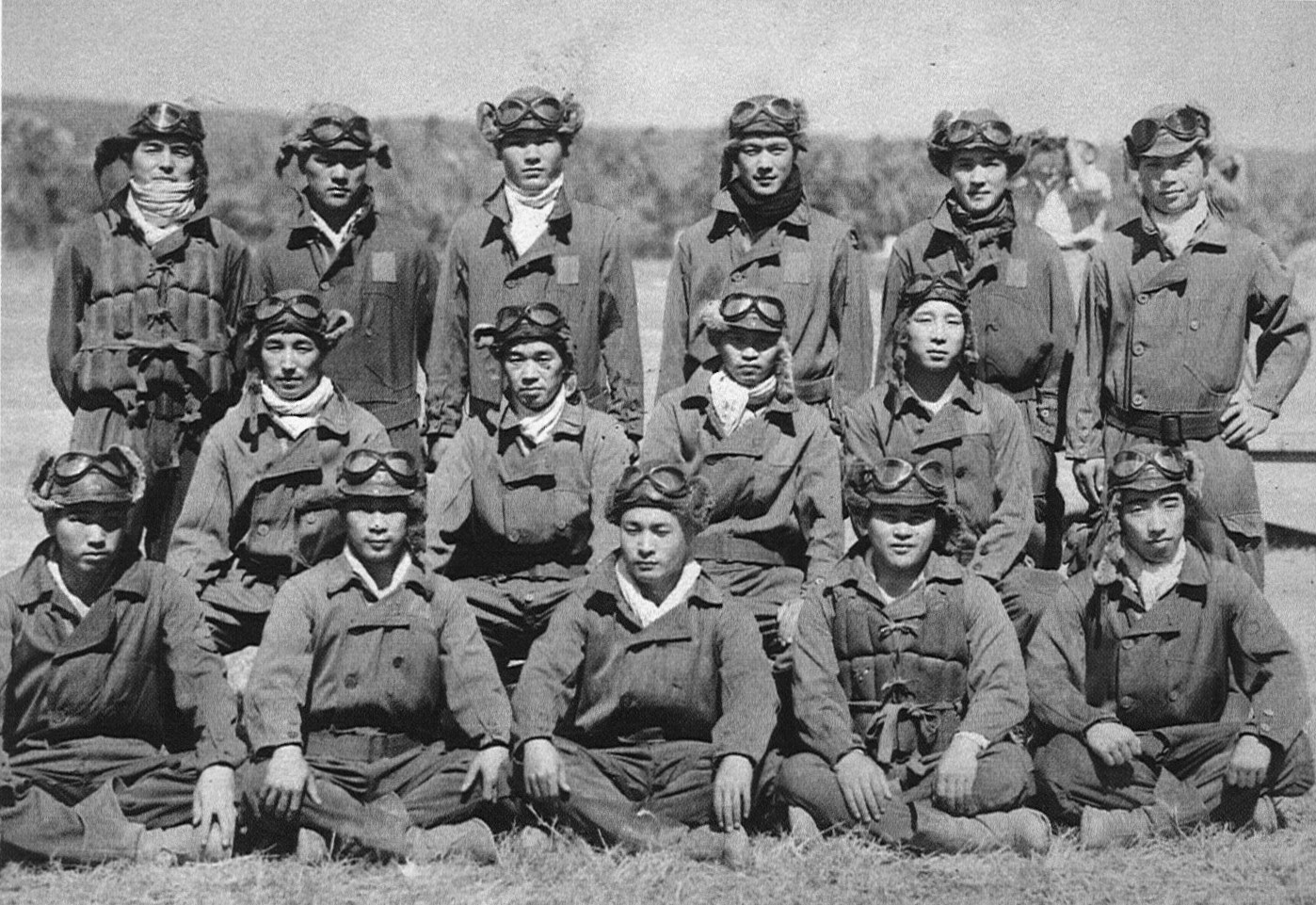
The unit frequently engaged with United States Army Air Forces and Royal Australian Air Force fighters operating from Port Moresby. Nishizawa's first confirmable solo kill, a USAAF P-39 Airacobra, occurred on April 11. He claimed six more kills in a 72-hour period from May 1 to 3, solidifying his status as a confirmed fighter ace. Nishizawa was a member of the famed "Cleanup Trio" with Saburō Sakai and Toshio Ōta. On the night of May 16, Nishizawa, Sakai, and Ōta were listening to an Australian radio program when Nishizawa recognized the eerie "Danse Macabre" by Camille Saint-Saëns. Inspired by this "mysterious skeleton dance," Nishizawa proposed a "dance of death" of their own over the enemy airfield at Port Moresby, suggesting they perform demonstration loops to "drive them crazy on the ground."
On May 17, 1942, Lieutenant Commander Tadashi "Shosa" Nakajima led the Tainan Kōkūtai on a mission to Port Moresby, with Sakai and Nishizawa as his wingmen. As the Japanese formation reformed for the return flight, Sakai signaled Nakajima that he was pursuing an enemy aircraft and peeled off. Minutes later, Sakai rejoined Nishizawa and Ōta over Port Moresby. The trio then performed aerobatics, executing three tight loops in close formation. A jubilant Nishizawa indicated he wished to repeat the performance. Diving to 6.00 K ft, the three Zeros performed three more loops, still without any anti-aircraft fire from the ground, before heading back to Lae, arriving 20 minutes after the rest of the Kōkūtai.
Around 9:00 PM, Lieutenant Junichi Sasai summoned them immediately. Upon their arrival, Sasai held up a letter, shouting, "Do you know where I got this thing? No? I'll tell you, you fools; it was dropped on this base a few minutes ago, by an enemy intruder!" The letter, written in English, stated: "To the Lae Commander: 'We were much impressed with those three pilots who visited us today, and we all liked the loops they flew over our field. It was quite an exhibition. We would appreciate it if the same pilots returned here once again, each wearing a green muffler around his neck. We're sorry we could not give them better attention on their last trip, but we will see to it that the next time they will receive an all-out welcome from us.'" Nishizawa, Sakai, and Ōta stood at rigid attention, struggling to suppress their laughter, as Lieutenant Sasai reprimanded them for their "idiotic behavior" and forbade any more aerobatic displays over enemy airfields. Despite the dressing-down, the Tainan Kōkūtai's three leading aces secretly agreed that their aerial choreography had been well worth the risk. However, Japanese combat records indicate no such separate action by the trio on the dates claimed by Sakai, suggesting this incident may be an embellished account.
3.2. Guadalcanal Campaign
In early August 1942, the Tainan Air Group relocated to Rabaul, immediately engaging U.S. forces operating on Guadalcanal. In their first engagement on August 7, Nishizawa claimed six F4F Wildcats, though historians have confirmed only two kills.
On August 8, 1942, Saburō Sakai, Nishizawa's close friend, was severely wounded in combat with U.S. Navy carrier-based bombers. Nishizawa, noticing Sakai's absence, flew into a furious rage, searching the area both for signs of Sakai and for American aircraft to engage. Eventually, he calmed down and returned to Lakunai. Later, to everyone's astonishment, the seriously wounded Sakai arrived. Struck in the head by a bullet, covered in blood, and blind in one eye, he had managed to return to base in his damaged Zero after a four-hour, 47-minute flight covering over 560 nmi. Nishizawa, Lieutenant Sasai, and Toshio Ōta transported the obstinate but barely conscious Sakai to the hospital. In a display of frustrated concern, Nishizawa physically removed the waiting driver and personally drove Sakai as quickly, yet as gently, as possible to the surgeon. Sakai was subsequently evacuated to Japan on August 12.
The prolonged and intense conflict over Guadalcanal proved costly for Nishizawa's air group, which was renamed the 251st Air Group in November. As American aircraft and tactics improved, the unit suffered heavy losses: Sasai, credited with 27 victories, was shot down and killed by Captain Marion E. Carl on August 26, 1942, and Ōta, with 34 kills, was killed on October 21, 1942. Nishizawa himself was reported to have achieved 30 kills by October 21, 1942, an accomplishment announced to all forces.
3.3. Service in Other Units and Reassignments
In mid-November 1942, the 251st Air Group, having suffered significant losses, was recalled to Toyohashi air base in Japan for rebuilding. The ten surviving pilots, including Nishizawa, were all assigned as instructors. By this time, Nishizawa is believed to have accumulated around 40 full or partial aerial victories, though some sources claim as many as 54.
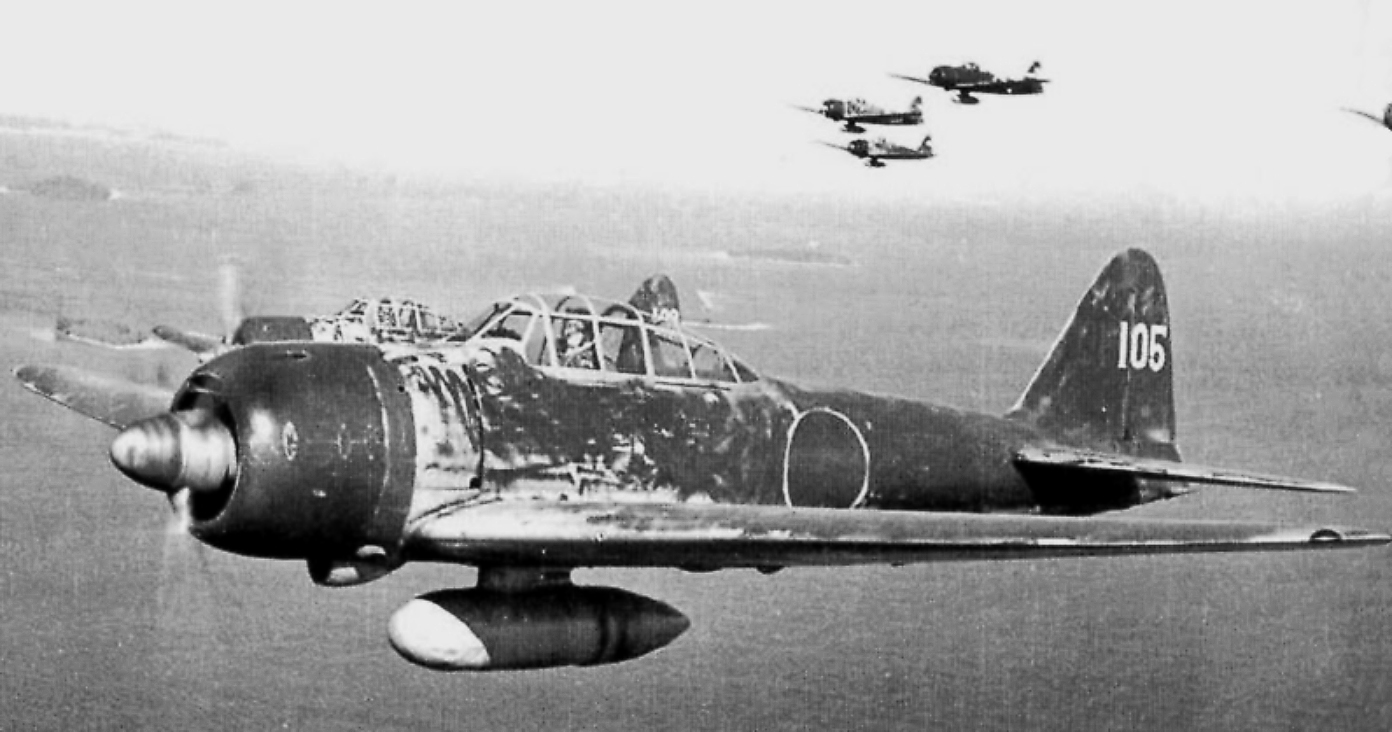
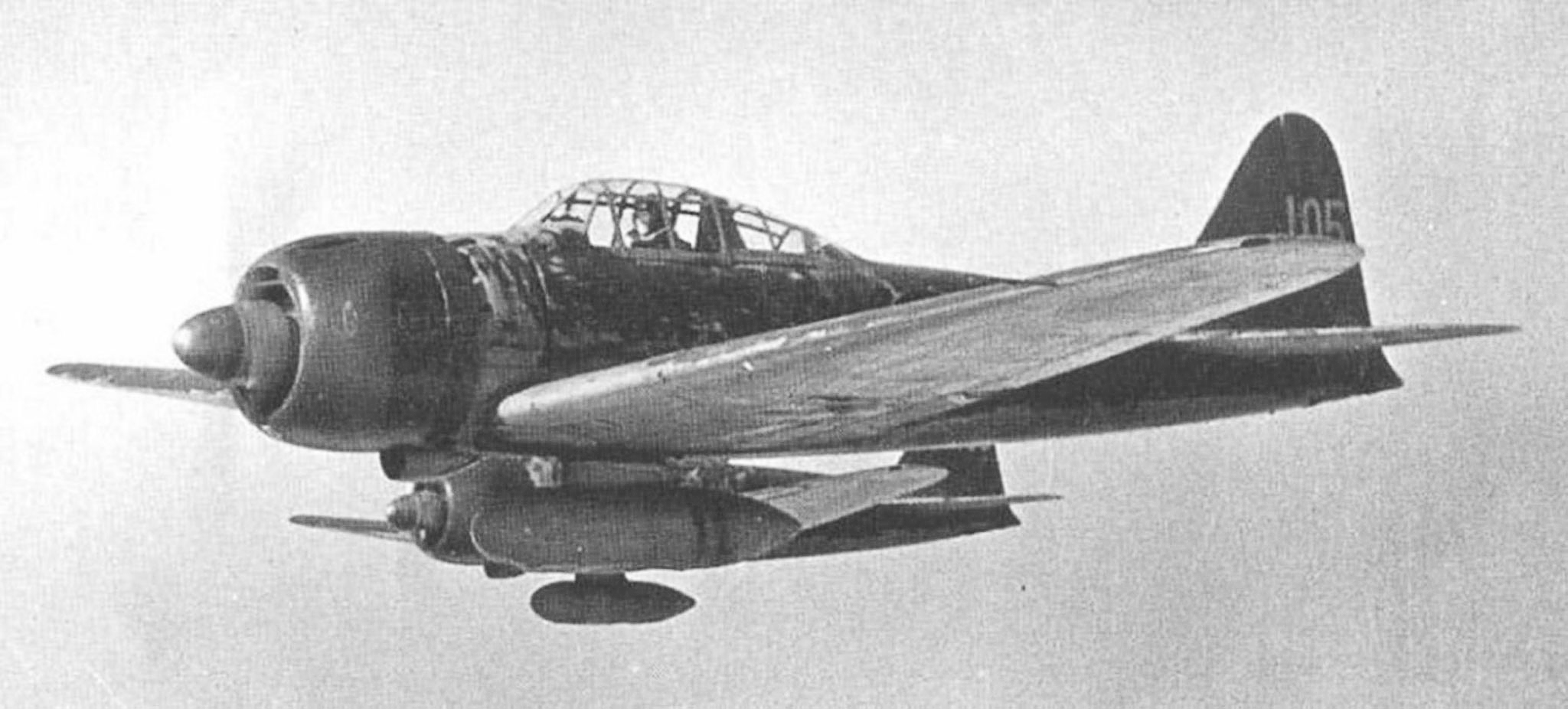
While in Japan, Nishizawa visited Saburō Sakai, who was still recuperating in the Yokosuka hospital. Nishizawa expressed his dissatisfaction with his new duty as an instructor, lamenting, "Saburō, can you picture me running around in a rickety old biplane, teaching some fool youngster how to bank and turn, and how to keep his pants dry?" He attributed the loss of most of their comrades to the ever-increasing material advantage of the Allied forces and the improved U.S. aircraft and tactics. "It's not as you remember, Saburō," he told Sakai. "There was nothing I could do. There were just too many enemy planes, just too many." Despite his frustrations, Nishizawa was eager to return to combat, stating, "I want a fighter under my hands again. I simply have to get back into action. Staying home in Japan is killing me."
Nishizawa publicly chafed at the months of inaction in Japan. The 251st Air Group returned to Rabaul in May 1943. In June 1943, Nishizawa's achievements were recognized with a gift from the commander of the 11th Air Fleet, Vice Admiral Jin'ichi Kusaka. Nishizawa received a military sword inscribed "武功抜群Buko BatsugunJapanese" ("For Conspicuous Military Valor") for his 100th kill. He was then transferred to the 253rd Air Group on New Britain in September. In November, he was promoted to warrant officer and reassigned to training duties in Japan with the Oita Air Group, where he served as a flight student instructor, known for being strict with his students but never boasting about his own achievements.
In February 1944, he joined the 203rd Air Group, operating from the Kurile Islands, a region that saw less intense action. By July 10, he was assigned to Fighter Squadron 303. During this period, Nishizawa expressed concerns about the command of inexperienced personnel as veteran pilots were steadily being lost, and he submitted a paper on military discipline. In September 1944, Nishizawa, along with other ace pilots such as Tetsuzo Iwamoto, Nobuyoshi Nagata, Yukiharu Ozeki, and Saburo Saito, gathered at the Mobara base in Chiba Prefecture. During this meeting, Nishizawa stated his personal kill count was over 120 aircraft. He also engaged in a discussion with Iwamoto, who described his tactic of waiting for enemy aircraft to withdraw before attacking them, as they would be "easy to shoot down" due to their lack of counter-attack intent. Nishizawa challenged this, arguing that such actions were not "joint kills" but rather targeting those who were either damaged or cowardly.
3.4. Philippines Campaign and Kamikaze Escort
In October 1944, the 203rd Air Group was transferred to Luzon as part of the Operation Shō-gō (捷号作戦) in the Philippines. Nishizawa and four other pilots were detached to a smaller airfield on Cebu.
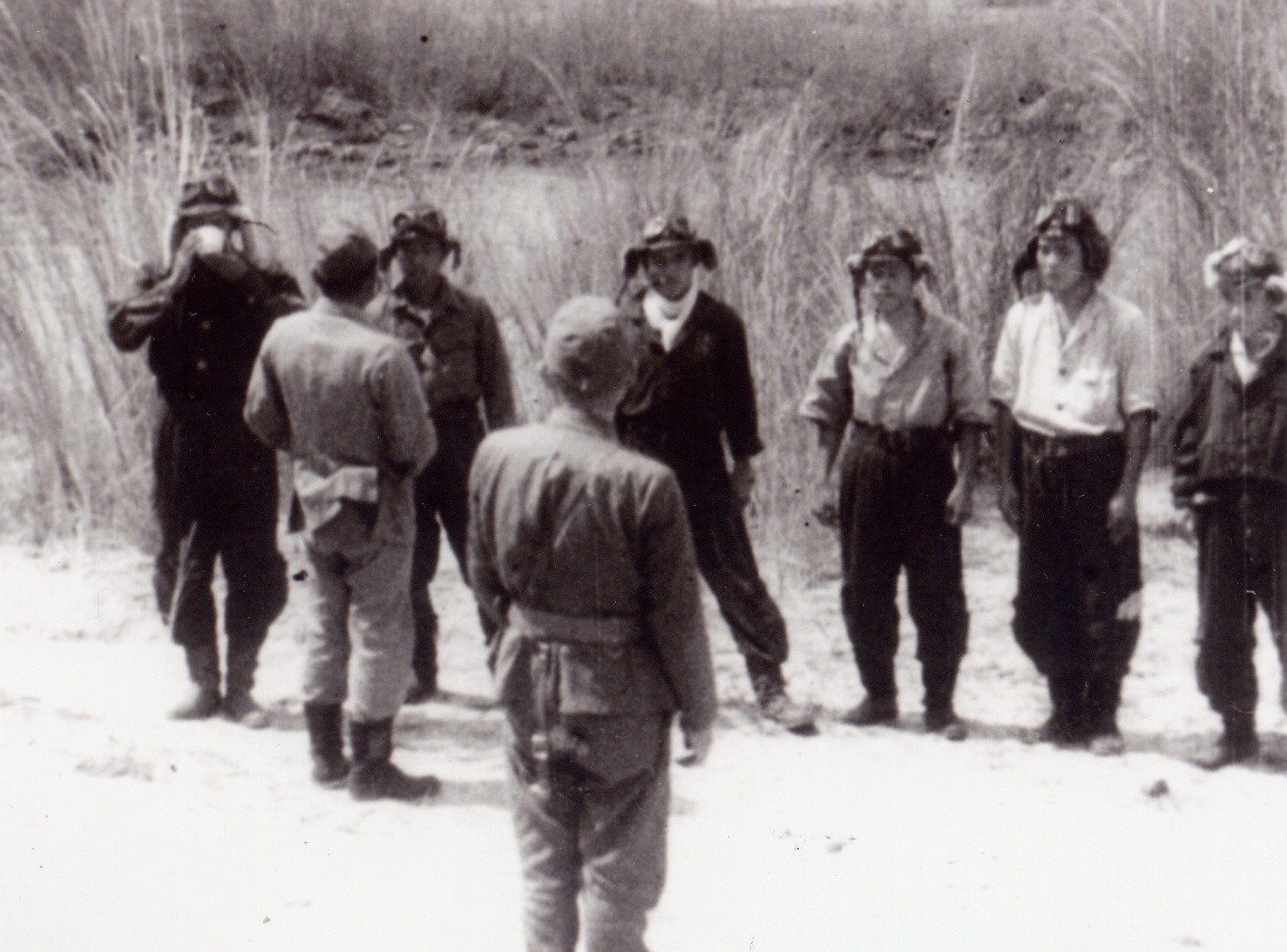
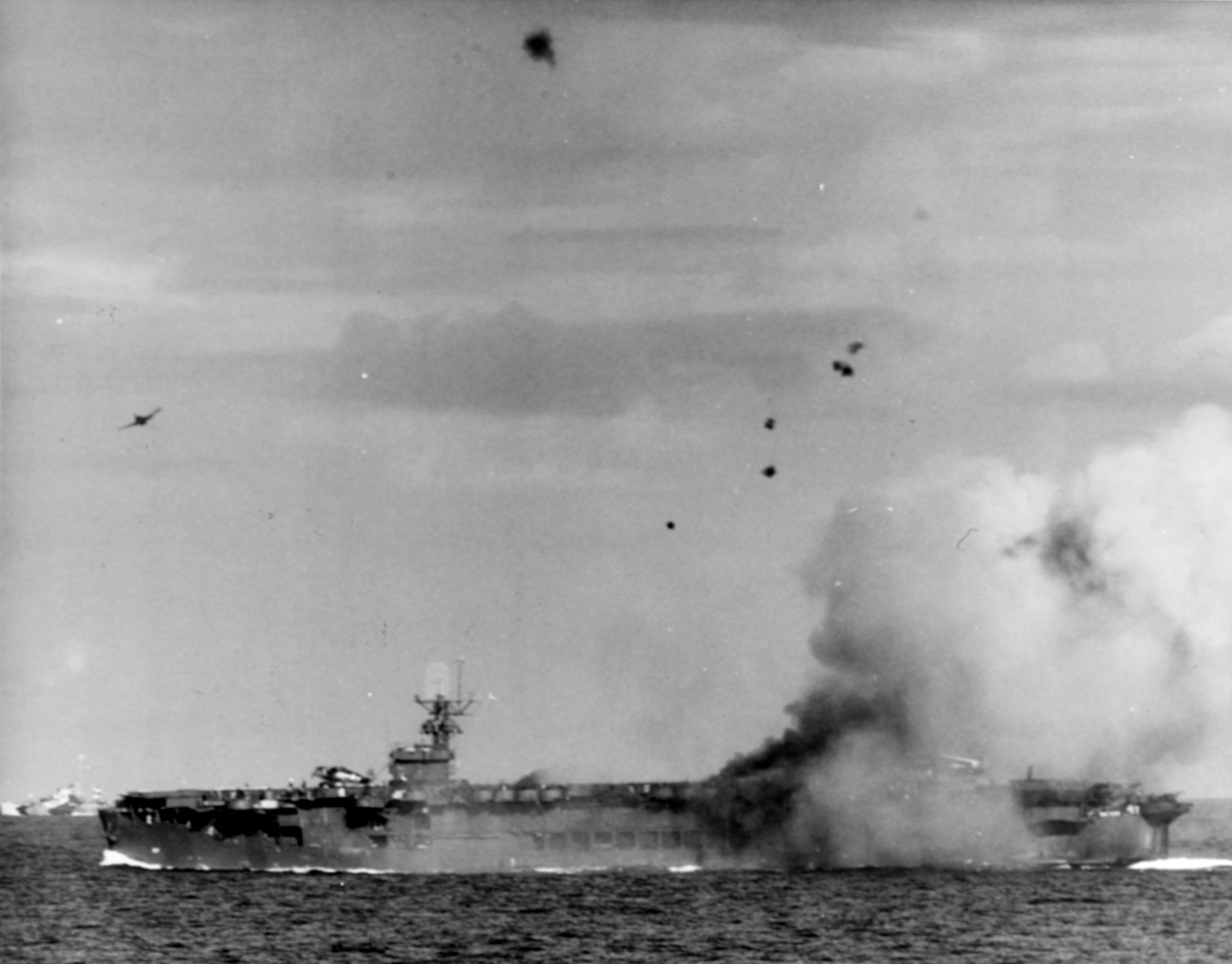
On October 25, 1944, Nishizawa led a fighter escort consisting of four A6M5s, flown by himself, Misao Sugawa, Shingo Honda, and Ryoji Baba. This mission was to escort the first major 神風kamikazeJapanese attack of the war, targeting Vice Admiral Clifton Sprague's "Taffy 3" task force, which was protecting the landings in the Battle of Leyte Gulf. During this escort mission, Nishizawa recorded at least his 86th and 87th victories, both Grumman F6F Hellcats, which would be the final aerial victories of his career. He reportedly experienced a premonition of his own death during this flight. After returning to base, Nishizawa reported the sortie's success to Commander Nakajima and then volunteered to participate in the next day's 特攻隊TokkōtaiJapanese kamikaze mission, but his request was refused.
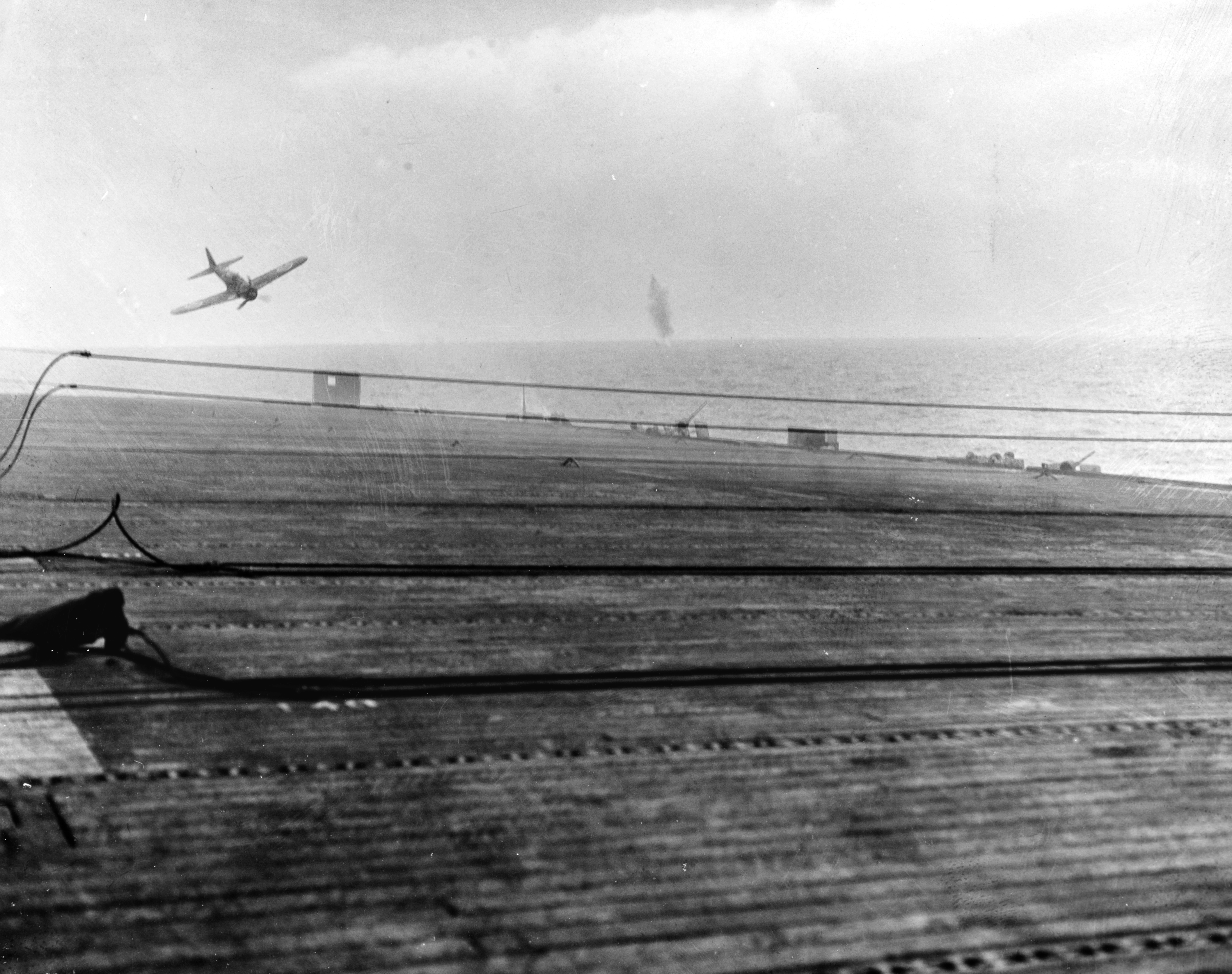
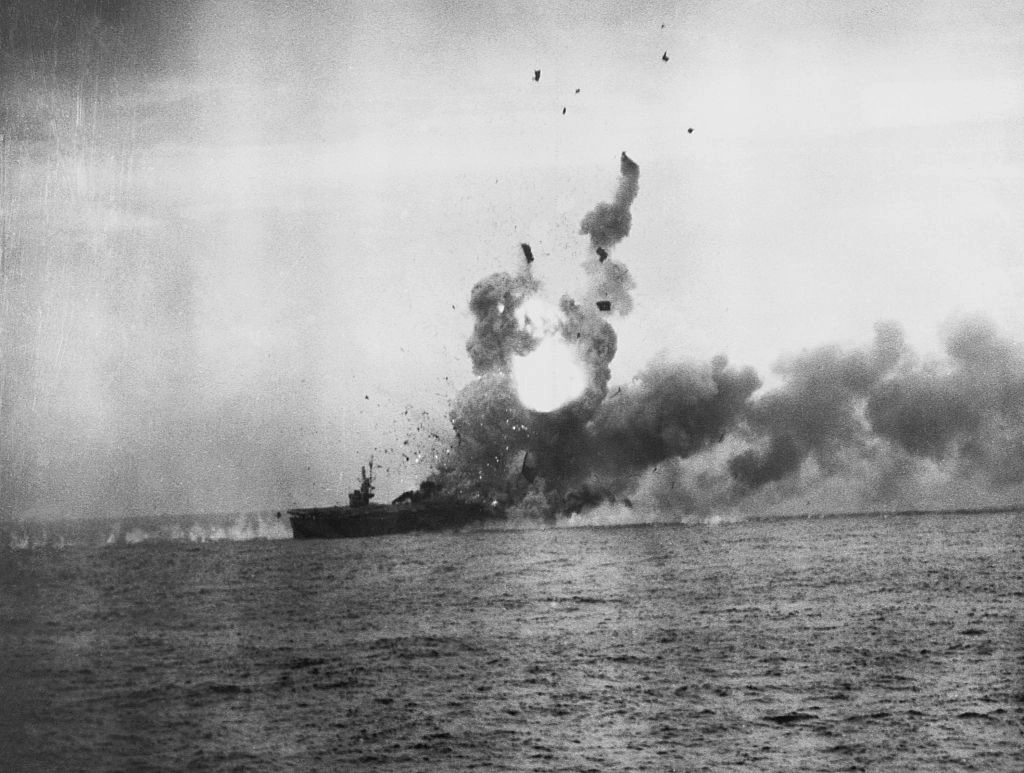
Instead, Nishizawa's A6M5 Zero was armed with a 551 lb (250 kg) bomb and flown by Naval Air Pilot 1st Class Tomisaku Katsumata. Despite being a less experienced pilot, Katsumata dove into the escort carrier USS Suwanee off Surigao. Katsumata crashed onto the Suwanee's flight deck and careened into a torpedo bomber that had just been recovered. The two planes erupted upon contact, as did nine other aircraft on her flight deck. Although the ship was not sunk, it burned for several hours, resulting in 85 crewmen killed, 58 missing, and 102 wounded. This incident underscores the devastating human cost of the kamikaze attacks, which Nishizawa, as an escort pilot, was part of.
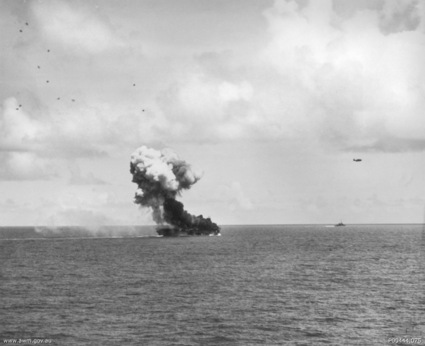
4. Combat Prowess and Reputation
Hiroyoshi Nishizawa's exceptional flying abilities and unique combat style earned him a fearsome reputation among both Allied and Japanese forces.
4.1. "Devil of Rabaul" Nickname
Nishizawa was widely known to his colleagues as "the Devil" due to his breathtaking, brilliant, and unpredictable aerobatics, coupled with his superb control of his aircraft during combat. This formidable reputation was solidified during his time operating from Rabaul, leading to his famous nickname, "Devil of Rabaul." Post-war war chronicles further cemented this moniker, highlighting his fearsome effectiveness in the skies over the Pacific. He was also known as the "Assassin of Sakura" and, within the Tainan Air Group, was sometimes referred to as one of the "Tainan Air Group's Three Crows" (三羽烏SanbagarasuJapanese).
4.2. Aerobatic Skills and Combat Style
Nishizawa's combat style was characterized by extraordinary aerobatic maneuvers and unpredictable tactics, making him a formidable opponent. Saburō Sakai, a fellow ace, vividly described Nishizawa's aerial prowess, stating, "Never have I seen a man with a fighter plane do what Nishizawa would do with his Zero. His aerobatics were all at once breathtaking, brilliant, totally unpredictable, impossible, and heart-stirring to witness." He was known for his ability to execute maneuvers that defied conventional understanding of what a fighter plane could do. While other aces like Tetsuzo Iwamoto advocated for tactical approaches such as waiting for enemy aircraft to withdraw before attacking, Nishizawa's approach emphasized direct engagement and a more aggressive, almost artistic, display of aerial mastery. This unique blend of skill and unpredictability contributed significantly to his legendary status.
5. Victory Claims and Historical Evaluation
The exact number of Hiroyoshi Nishizawa's aerial victories remains a subject of historical debate, with various figures reported from his personal accounts, contemporary records, and post-war analyses.
5.1. Reported and Official Victory Claims
Hiroyoshi Nishizawa's aerial victory claims vary significantly across different sources. He reportedly told his last commanding officer that he had achieved a tally of 86 or 87 aerial victories. In a personal letter to his family in the spring of 1944, he claimed 147 kills. Newspaper reports at the time of his death stated he had over 150 victories. Post-war, he was linked with scores of 147 or 103, although both of these figures have been considered inaccurate by some historians. The official Japanese Navy record, as announced in Combined Fleet bulletin 172 on August 15, 1945 (at the end of the war), stated that Nishizawa had achieved "429 enemy aircraft shot down, 49 damaged, including 36 solo kills, 2 damaged, a rare and brilliant military achievement." Another official Japanese Navy record indicates his final tally was around 120 kills. Martin Caidin's book credits him with 102 kills. These discrepancies highlight the inherent challenges in accurately verifying aerial victories during wartime, especially given the chaotic nature of combat and differing methods of counting shared kills versus solo kills.
5.2. Historical Assessment of his Achievements
Despite the varying numbers, Hiroyoshi Nishizawa is widely regarded as one of the most successful Japanese fighter aces of World War II, and possibly the most successful. His impact on air combat during the war was significant, as his exceptional skills and aggressive tactics made him a formidable opponent for Allied forces. His legacy as an ace pilot is recognized internationally; his portrait is displayed at the United States Department of Defense and the Smithsonian Institution alongside other prominent aces, including Shoichi Sugita. This recognition from former adversaries underscores his remarkable combat prowess and his place in military aviation history. His achievements, though part of a destructive war, are acknowledged for their extraordinary individual skill and bravery.
6. Personal Life and Characteristics
Beyond his fearsome reputation as an ace pilot, Hiroyoshi Nishizawa was remembered by his peers for his distinctive physical appearance and a personality that often set him apart.
6.1. Physical Description and Personality
Saburō Sakai, his close friend and fellow ace, described Nishizawa as being approximately 68 in (173 cm) (5 feet 8 inches) tall and weighing 139 lb (63 kg) (140 pounds). He was noted for his pale and gaunt appearance, a result of constantly suffering from malaria and various tropical skin diseases throughout his deployments. Despite his somewhat frail appearance, Nishizawa was accomplished in judo. His peers in the squadron often considered him a reserved, taciturn loner, a perception that contributed to his mystique. Other accounts describe him as handsome and suggest he was over 71 in (180 cm) tall, with one classmate recalling him as about 5 feet 9 inches (70 in (178.8 cm)). Due to his somewhat thin build and perpetually pale face, he was nicknamed "青びょうたんAobyotanJapanese" ("pale gourd") during his 予科練YokarenJapanese days. Despite his quiet nature, he was highly respected for his combat abilities.
6.2. Relationships and Camaraderie
Nishizawa's most notable relationships were within the elite group of pilots he flew with, particularly Saburō Sakai and Toshio Ōta. Together, they formed the renowned "Cleanup Trio" of the Tainan Air Group. Sakai considered Nishizawa his closest friend, and their bond was evident in Nishizawa's furious reaction when Sakai was wounded over Guadalcanal. The trio's camaraderie was also highlighted by their controversial "dance of death" aerobatic display over Port Moresby, an act of shared bravado that, despite official reprimand, strengthened their bond. These relationships provided a crucial support system within the high-stress environment of aerial combat, where pilots relied on each other for both tactical support and emotional solace amidst heavy losses.
7. Death
Hiroyoshi Nishizawa's life came to an abrupt end during the intense final stages of the Philippines Campaign, far from the cockpit of his beloved Zero fighter.
7.1. Final Mission and Demise
On October 26, 1944, the day after escorting the first major kamikaze attack, Nishizawa's own Zero fighter had been destroyed. He, along with other pilots of the 201st Kōkūtai, boarded a Nakajima Ki-49 呑龍DonryuJapanese ("Helen") transport aircraft in the morning. Their mission was to travel to Clark Field in Mabalacat, Pampanga, on Luzon, to ferry replacement Zeros back to their airfield in Cebu.
As the Ki-49 transport flew over Calapan on Mindoro Island, it was attacked by two Grumman F6F Hellcats from VF-14 squadron, operating from the fleet carrier USS Wasp. The transport aircraft was shot down in flames. Nishizawa died as a passenger in the crash. He was most likely a victim of Lt. (j.g.) Harold P. Newell, who was credited with shooting down a "Helen" northeast of Mindoro that morning. While Newell identified the transport as a Type 100 Heavy Bomber (a Japanese Army aircraft), other accounts suggest it might have been a Type 1 Land Attack Aircraft or even a Type 0 Transport plane, highlighting the confusion inherent in combat reporting. Nishizawa's remains were never recovered.
8. Posthumous Recognition and Legacy
Following his death, Hiroyoshi Nishizawa received significant posthumous honors and continues to be recognized in historical accounts of World War II.
8.1. Posthumous Promotion and Honors
Upon learning of Nishizawa's death, the commander of the Combined Fleet, Admiral Soemu Toyoda, honored him with a special mention in an all-units bulletin. Nishizawa was posthumously promoted to the rank of Lieutenant Junior Grade. He was also given the posthumous name 武海院廣範義高居士Bukai-in Kohan Giko KyoshiJapanese, a Zen Buddhist phrase that translates to:: "In the ocean of the military, reflective of all distinguished pilots, an honored Buddhist person." This honor was in addition to the military sword inscribed "武功抜群Buko BatsugunJapanese" ("For Conspicuous Military Valor") he had received earlier for his achievements. Due to the widespread confusion towards the end of the Pacific War, the bulletin's publication was delayed, and funeral services for Nishizawa were not held until December 2, 1947.
8.2. Historical Memory and Recognition
Hiroyoshi Nishizawa is remembered in military history as one of the most formidable Japanese naval aces of World War II. His exceptional combat record and legendary skills have ensured his place in aviation history. His contributions and prowess are recognized internationally, with his portrait displayed at institutions such as the United States Department of Defense and the Smithsonian Institution, where it is placed alongside that of fellow ace Shoichi Sugita. This recognition from former adversaries highlights the respect for his individual skill, even within the context of a devastating global conflict.
9. Critical Perspectives and War Glorification
While Hiroyoshi Nishizawa is celebrated for his extraordinary piloting skills and combat record, it is crucial to examine his career through a critical lens, considering the broader context of war propaganda, the glorification of military figures, and the profound human cost of aerial warfare.
9.1. Analysis of Ace Pilot Narratives
The narrative surrounding "ace pilots" like Nishizawa often serves a significant role in wartime morale, presenting heroic figures who embody national strength and individual prowess. However, this phenomenon can lead to the romanticization of combat and an uncritical acceptance of victory claims. The discrepancies in Nishizawa's reported kill count-ranging from his personal claims of 147 to official figures of 87 or 120, and post-war estimates that are now considered inaccurate-illustrate the challenges in verifying such claims and the potential for exaggeration driven by wartime propaganda. Incidents like the "dance of death" aerobatics, while showcasing incredible skill, also highlight a bravado that, when viewed critically, can be seen as a dangerous and ultimately self-destructive aspect of military culture, rather than purely heroic. Understanding these narratives requires acknowledging their function in wartime while questioning their uncritical acceptance in historical memory.
9.2. The Human Cost of Aerial Warfare
Nishizawa's career, while marked by individual brilliance, was inextricably linked to the immense human cost of aerial warfare. His own physical ailments, such as chronic malaria and skin diseases, offer a glimpse into the harsh realities faced by pilots in the Pacific theater. His frustration during his period as an instructor, longing to return to the front lines, and his reported premonition of his own death, underscore the psychological toll of constant combat and the relentless pressure on those involved. Furthermore, his role in escorting the first kamikaze attacks, and the subsequent devastation caused by his own plane being used in such a mission against the USS Suwanee, resulting in numerous casualties, directly connects his actions to the broader framework of the war's devastation. While individual skill and bravery are undeniable, the ultimate legacy of aerial combat lies in the widespread destruction and loss of life it inflicted on all sides, a critical perspective that must accompany any celebration of military achievements.